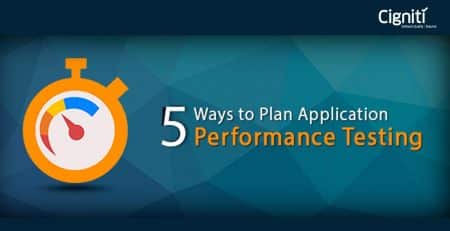What should be your strategies for Cloud Performance Testing
Cloud computing is changing how the end users deploy, monitor, and use applications. Cloud offers a virtually–infinite pool of computing, storage, and networking resources where applications can be scaled as desired. However, it is important to measure the performance of these applications in the cloud. Performance is the utmost factor in testing a web application as it directly impacts the end–user experience.
However, cloud performance testing is different from that of traditional applications. The main aim of performance testing is to measure the parameters such as system throughput and latency with changing number of parallel users accessing your application, with different load profiles, and various other performance metrics. In Cloud infra, this becomes a bit more typical with multiple virtual machines.
Understanding the Cloud
Cloud is a pay-per-use model that you can scale whenever you want. You can demand the additional resources required, which will be allocated to you. With high location independence, virtual resources are dynamically assigned and reassigned according to the customers’ needs.
Some metrics important for a successful cloud implementation are storage, processing, bandwidth, and the number of users accessing it at any given point. Elasticity is one of the significant factors for the cloud infrastructure as it defines the cloud’s ability to deal with varying load variations by adding more resources during high load or consolidating the users to fewer points when the load decreases, all in a live cloud setup.
Scalability, availability, fault tolerance, and reliability are other factors that define an excellent cloud infrastructure. Moving performance and load–based application testing to the cloud lowers capital and operational costs and supports distributed development and testing teams.
Cloud performance testing allows you to get the maximum performance by utilizing a cost-effective means of testing applications at scale. It also allows you to simulate load tests constituting millions of concurrent users from multiple locations.
Types of Performance Testing
Below are the types of performance testing on cloud you should conduct:
- Stress test: Stress testing validates the cloud infrastructure’s responsiveness, reliability, and stability under extremely high loads.
- Load test: Load testing ascertains whether or not the system performs optimally when multiple users use it simultaneously.
- Browser testing: This type of testing is critical for determining a browser’s compatibility with the overall system.
- Latency testing: A latency test is required to measure the time taken to move data messages between two points within a cloud network.
- Targeted infrastructure test: Each component or layer of an application is isolated and tested for the ability to deliver the required performance. This test helps uncover any issue that would hamper the overall system’s performance.
- Failover test: It determines a system’s ability to call in additional resources when it faces heavy traffic and usage to ensure that the end user’s experience is unaffected.
- Capacity test: This test is essential for effectively identifying and benchmarking the maximum amount of traffic or load the cloud system can handle.
- Soak test: Soak testing measures a system’s performance when exposed to heavy traffic for an extended duration to validate its behavior in the production environment.
Building the Right Strategy for Performance Testing in Cloud
Cost–effectiveness is one of the major factors which is pushing cloud computing. Cloud lets you easily create separate test regions for system testing as and when you want. The right cloud testing strategy should focus on the motive behind moving to the cloud, including cost savings, infrastructure access ease, reduction in cycle times, and choice of public, private, or hybrid cloud, among others. The strategy should also clearly mention the type of tests to be performed in the cloud – do you want only Soak tests, or capacity tests, or all the ones mentioned above? Certain risks are associated with the Cloud that should be kept in mind before making the final decision. Building a test environment, Infra requirements for the tests, and the required testing tools, bandwidth, hardware, and software are the other parameters that should be part of your test strategy.
Security, quality, reliability, latency, and bandwidth should be carefully looked upon if you are going with any external cloud service provider. After all the setup is done, we finally need to perform the execution of tests. For performance tests, it becomes typical to vary the load with changing user’s demands and many other factors, so this should be tested according to the defined cloud testing strategy. Continuously monitor and analyze test results as you would in other setups, but in this case, it should be done in real-time to ensure you can improve it over time. Cloud usage is usually linked to payment very closely. Though scalable, you need to pay as you scale, so ensure that you have that covered with your service provider as per current and future usage. Otherwise, you might end up with a huge bill.
Cigniti’s Performance Engineering & Testing teams have extensive experience providing cutting-edge services to global clients. Our Performance Testing expertise spans a wide range of applications, including client-server, web, distributed, mobile, cloud databases, high–volume transaction systems, and highly–complex applications. We have built a dedicated Performance Center of Excellence (PCoE) that provides end-to-end performance testing solutions for helping our clients launch future–proof applications with high responsiveness, availability, and scalability. Schedule a discussion with us to know how we can help your enterprise realize these benefits.





Leave a Reply